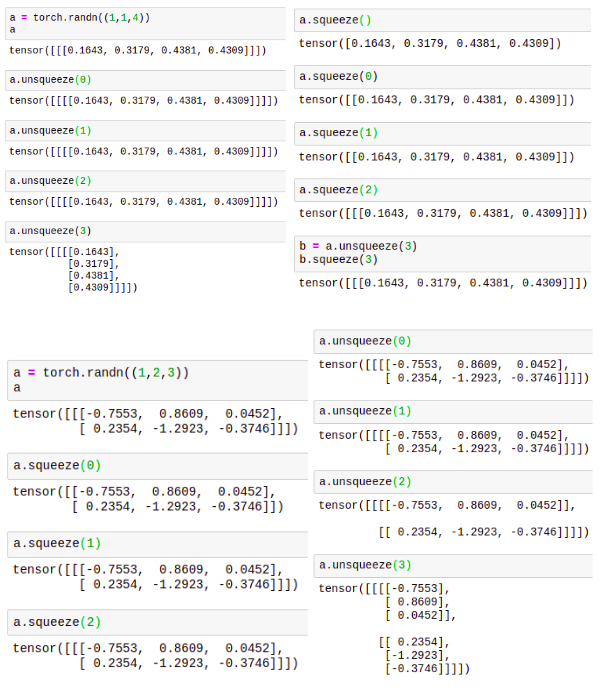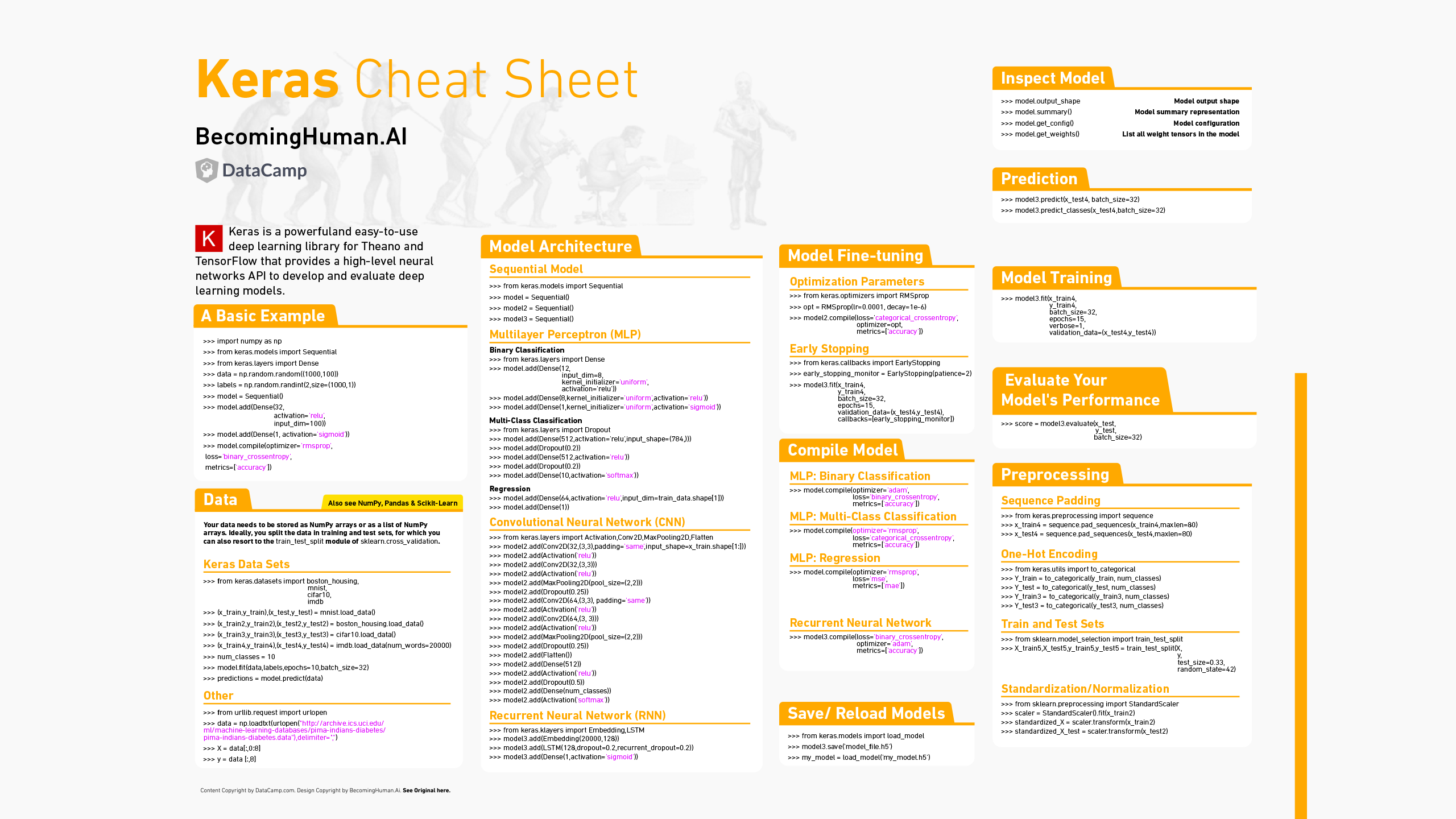Pytorch Cheat Sheet
Anchor boxes Anchor boxing is a technique used to predict overlapping bounding boxes. In practice, the network is allowed to predict more than one box simultaneously, where each box prediction is constrained to have a given set of geometrical properties.
- Pytorch入门 Cheat Sheet by Yuxuejie0912 - Cheatography.com Created Date: 5650Z.
- Pytorch Cheatsheet. For more updated examples, see: Pytorch Kaggle Starter. Get A Weekly Email With Trending Projects For These Topics. Unsubscribe easily at any time.
Hey Finxters! I have another top 10 cheat sheets for you to consider and tape to your wall. In this article, I will be presenting the best Pytorch cheat sheets available. Keep them handy when you are working on a project and would like to spend less time searching for the correct function you are trying to write and spend more time developing.
Cheat Sheet 1: Pytorch.org
This cheat sheet is a quick guide to the formulas you will write in Pytorch. It has clear examples of how to run each method. It is good to have on hand when you are trying to write your program and not have your flow interrupted from having to search google or stack overflow with the exact syntax you need.
Pros: Rated ‘E’ for everyone. East to read and understand.
Cons: None that I can see.
Cheat Sheet 2: KDNuggets
This cheat sheet is for the beginner in Pytorch. It is thorough in explanations and will take you step by step to building and testing your model. It has code examples and is a good transitional read to the official documentation. KDNuggets is a site for every developer beginner and advanced. It is one I visit often in my spare time.
Pros: Rated ‘E’ for everyone. Easy to read and understand.
Cons: It is a lengthy read.

Cheat Sheet 3: UCDavis
This tutorial goes over how to use Pytorch as your framework of choice when building a machine learner. It has both explanations and code examples. It is also broken down into power point cards to give you only the important highlights.
Pros: Parallels desktop 12 for mac catalina. Rated ‘E’ for everyone. Easy to read and understand.
Cons: None that I can see.
Cheat Sheet 4: Cheatography
Another cheat sheet from Cheatography. Beta: theme gallery and design settings. It contains all of the commands used and the syntax used to call the functions. This quick reference is one you will want to keep handy as you develop AI and Machine Learning programs.
Pros: Rated ‘E’ for everyone.
Cons: None that I can see.
Cheat Sheet 5: Pytorch.org
Always check the official documentation when you are learning something new. This tutorial and cheat sheet will cover Pytorch from beginner to expert and give you the complete confidence to use this framework
Pros: Rated ‘E’ for everyone. This is the best way to become an expert in Pytorch.
Cons: None that I can see.
Cheat Sheet 6: Simon Wenkel
This cheat sheet is from a developer who published this PDF as it covers the basics of Pytorch syntax though it does not give any examples to show you how what you are going to use is what you want.
Pros: Very handy to look up syntax on various Pytorch methods and functions.
Cons: Be prepared to look up syntax and what it does before you use it in your project.
Cheat Sheet 7: Github
This cheat sheet is specifically created to help with Kaggle competitions. It has three example Jupyter notebooks walking through basic single-model outline submissions. You will learn model training, data loading and more using actual examples.
Pros: Excellent for those who want to try Pytorch and are unsure of where to begin.
Cons: None that I can see.
Cheat Sheet 8: AIM
This cheat sheet quickly goes over what Pytorch is and what tensors are. It even points to official documentation if you want to learn more. This specific cheat sheet shows you how to build a Neural Network Module giving you a rough concept of what it is and how it is used.
Pros: Great for a first introductory to the Neural Network Module.
Cons: May cause confusion to the absolute beginner. Read official documentation first.
Cheat Sheet 9: Tutorial and Example
Here is another beginner’s tutorial for Pytorch. It not only gives you a tutorial and code examples but also compares Pytorch to Tensorflow. It explains why you should pick Pytorch as your framework instead. It will explain the elements and advantages to using Pytorch.
Pros: Rated ‘E’ for everyone.
Cons: None that I can see.
Cheat Sheet 10: ProgrammerSought
This is a Pytorch tensor handling cheat sheet for learning how to cat, stack, squeeze, unsqueeze, permute and the like. It has other related posts to Pytorch and will show you example code.
Pros: Great place to start and even get boiler plates

Cons: None that I can see.
Bonus Cheat Sheets: TechRepublic
Can’t get enough cheat sheet on Pytorch? Well, I have a gift for you!! These resources have books, videos, courses and tutorials, and websites about Pytorch! This is a great place to look if you want more information on this free opensource machine learning library. I encourage every serious developer to take a look at these resources.

Pros: Rated ‘E’ for everyone.

Pytorch Cheat Sheet Pdf
Cons: None that I can see unless you aren’t a serious developer.
Related Articles:
Pytorch Cheat Sheet Pdf Download
Related Posts
